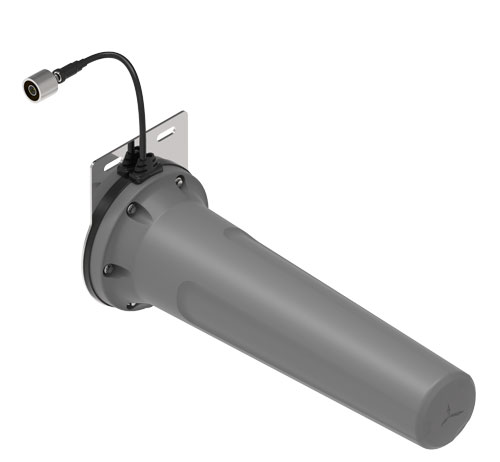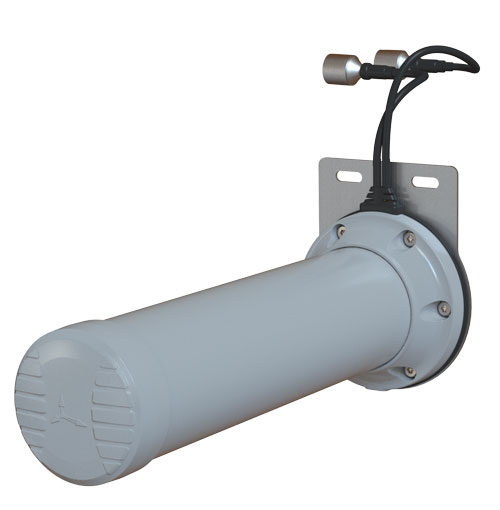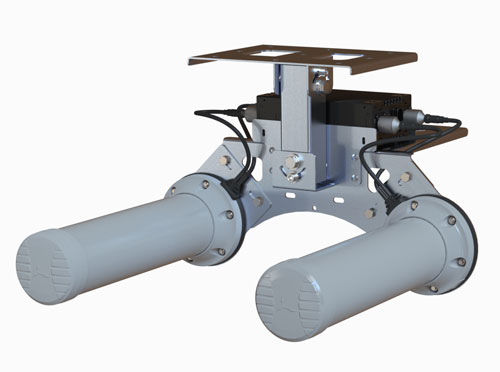Helical Antennas And Leaky Feeder: Economic Benchmark For Underground High-Bandwidth Applications

Executive Summary

This analysis aims to provide a clear understanding of the total cost of ownership (TCO) for each antenna type, allowing organizations and clients to make informed decisions based on their budgets and specific requirements.
Discussion
Deployment works: associated costs and constraints
Installation of leaky feeder systems, especially in confined or complex environments like tunnels, is very time-consuming. The need to deploy cable hanger kits every 50 cm or so, together with the fact that is typically done higher up on the tunnel walls (meaning the usage of a hydraulic mobile scissor lift is mandatory) and then need for careful cable installation preparation makes for very “slow” installations.
Moreover, given its nature, a Leaky Feeder needs additional equipment such as repeaters, couplers, and power supplies that will demand outlet points to be created along the way, contributing to an additional cost increase on deployment.
To deploy a high bandwidth wireless communications network, the network will need to operate on frequencies around, or above, 1GHz. To keep attenuation and signal loss to a minimum, leaky feeders used for these frequencies need to be rather thick, making it heavy to carry along the tunnel, resulting in the need for a vehicle to transport the cable reels.
Taking longer times for deployment, will translate in bigger operation disruption. When considering road tunnels, this means closing lanes, when considering rail tunnels, this translates in getting the operation to a full halt, as the lines must be shut down, for HS reasons. For these two examples, in particular, this automatically translates into works done at night-time, when typically, more HS incidents occur and labour is more expensive.
Finally, when considering the work associated with the deployment of Leaky Feeder, vs deploying an antenna, the resources for deploying Leaky Feeders need to be experienced with deploying, crimping, and testing/ensuring the correct installation of a Leaky Feeder. Installing antennas, which come pre-tested from the manufacturer, that may require no work with coaxial cables, can be done with less skilled labour or, with a much lower risk of a poor deployment.
Networks deployed with Helical antennas have none of the aforementioned issues. Being a “discrete” system, the only thing that’s needed is to install the antennas exactly where the Access Points/Base Stations are installed.


Let’s consider the following cost comparison for ensuring 500 meters of coverage of a data-first wireless system for a tunnel. Data-first means that coverage is important, but the signal quality is also of the utmost importance for ensuring high throughputs. Because of this, we will use 2×2 radios. For this cost comparison, we’re going to work with the following assumptions:
- Health & Safety costs: we may consider, for this case, that they’re the same. Even if they aren’t, as Leaky Feeder takes at least 3 times the time to install.
- Disruption to regular business operation: we will consider that disruption of normal business operation has no, or the same cost, whether it is 3 days or 1.
- Likelihood of errors or mistakes: We will assume that likelihood of errors or mistakes is the same whether works last for 3 or a single day.
- We will assume that no amplifiers are used for the leaky feeder, so no adjacent costs to power these up.
- Labour is based on Portuguese Market rates, which are the cheapest of any European countries (excluding eastern countries).
- Regarding the active parts of the system, the radios, we will assume:
- we’re working exactly with the same make and model, and because we’re considering high bandwidth applications, we will consider a 2×2 radio, meaning we need a 2×2 antenna system (regardless of LF or Helical). For this comparison, we take a high-end Wi-Fi AP or a private 4G radio.
- Even if discussable, we will assume that to cover 500 m one needs two 2×2 MIMO antennas, (which most probably one wouldn’t, using bidirectional Helical antennas).
Leaky Feeder setup:

Helical Antenna setup:

Costs of Preventive Maintenance
In the case of leaky feeder systems, they may require more frequent maintenance due to their multiple components and distributed radiation pattern. This can lead to higher labour and material costs for preventive maintenance. On the other hand, helical antennas generally require less preventive maintenance as a result of their simpler design and focused radiation pattern. This translates into lower labour and material costs. Additionally, helical antennas based-deployments have fewer points of failure, which means that there are fewer spare parts to hold in stock for fast replacement and fewer maintenance and support contracts to manage.
Costs of Repairs
When it comes to leaky feeder systems, repair costs can be higher due to the complexity of the system and the potential for damage to multiple components. The distributed nature of leaky feeders can make fault localization and repair more time-consuming, resulting in increased labour costs. In contrast, repairs for helical antennas are typically less expensive, as they have fewer components and a more straightforward design.
Fault localization and repair are usually quicker and easier, leading to lower labour costs. Additionally, if damage is caused by an impact of a vehicle or machine that rips part of the cable from the wall, both leaky feeder and antenna systems may experience a loss of coverage in an entire section of the tunnel.
However, the helical antenna system can be replenished much faster, lowering the total cost of repair.
The only way to ‘troubleshoot’ leaky feeder systems, when performance issues arise, particularly those issues that cause performance degradation, is to ‘frequency sweep’ the ‘leaky feeder’ using a Network Analyser including using a TDR (Time Domain Reflectometer) to determine the distance (location) to the fault. In most cases, the entire Cable section between Repeaters needs replacing at a huge cost in terms of material, labour (including Engineers to operate the Test Equipment) and downtime in the Tunnel.

Conclusion

In conclusion, helical antennas present a significantly more advantageous solution for underground wireless communication deployments compared to leaky feeder systems. Not only do they provide superior performance in terms of signal quality and coverage, but they also offer substantial cost savings in various aspects. From deployment to preventive maintenance and repairs, helical antennas require less time, labour, and resources. Furthermore, their simpler design and focused radiation pattern make them more resilient and easier to manage, resulting in fewer points of failure and reduced downtime.
By opting for helical antennas, organizations can achieve more reliable, efficient, and cost-effective wireless infrastructure in confined or complex environments, such as tunnels, mines, and underground facilities.

